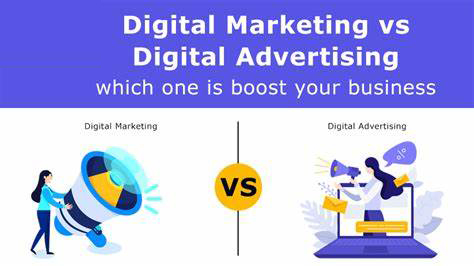Introduction
In today’s fast-paced digital world, Nigerian SMEs face a dilemma: digital marketing vs. digital advertising and which approach is better for their business. In this article, we will crack the code of online success as we explore the essential strategies of digital marketing and digital advertising to help you reach your target audience, boost your online visibility, and elevate your business to new heights.
Whether you’re just starting out or looking to enhance your existing online presence, the information you’ll find here will serve as your roadmap to a successful digital journey. Stick with us through this article, and we’ll show you how to create a compelling digital marketing structure and system that can make all the difference for your Nigerian SME.
I. The Power of Digital Marketing
Digital marketing encompasses a wide array of strategies and tactics aimed at promoting your business online. It’s the art of connecting with your target audience, engaging them, and ultimately, converting them into customers. Let’s delve into some of the key aspects of digital marketing that can help you thrive in the digital landscape.
Content is King
One of the most powerful tools in the digital marketing arsenal is content. Content marketing involves creating and sharing valuable, relevant, and consistent content to attract and engage your target audience. Without a website, you can still harness the power of content through platforms like social media, email newsletters, and even blogging on third-party websites. Our team specializes in creating compelling content for Nigerian businesses like yours. Contact us to explore how we can help you make the most of this strategy.

Social Media Engagement
With 15.8% of Nigerians active on social media, platforms like Facebook, Instagram, and Twitter provide a golden opportunity for engagement. A strong social media presence can serve as a gateway to your business, allowing you to connect with your audience, share your brand story, and build meaningful relationships. If you’re unsure how to maximize your social media presence, our experts can help you develop a tailored social media strategy for your SME.
Email Marketing
Email marketing remains an effective way to reach your audience directly. It’s a powerful tool for keeping your customers informed, offering exclusive deals, and nurturing leads. Even without a website, you can build and segment your email list, sending targeted messages that resonate with your subscribers.
Search Engine Optimization (SEO)
SEO is all about optimizing your online content so that it ranks higher in search engine results. While having a website provides more opportunities for SEO, you can still optimize your presence on third-party platforms and business directories. This will increase your visibility when potential customers search for products or services in your niche.
Want to boost your SEO game without a website? We can assist you in optimizing your presence on platforms like Google My Business to ensure you’re seen by more potential customers.
II. Digital Advertising: A Laser-Sharp Approach
Digital advertising is a subset of digital marketing and focuses on paid promotions to reach your audience. It offers precision targeting and immediate results, making it a formidable weapon in your online marketing arsenal. Let’s explore how digital advertising can benefit your Nigerian SME.
Social Media Advertising
Social media platforms offer robust advertising options that allow you to reach a highly targeted audience. You can create ad campaigns on platforms like Facebook and Instagram, specifying demographics, interests, and behaviors, ensuring that your ads are seen by the most relevant potential customers. At We specialize in creating and managing social media ad campaigns for SME businesses. Reach out to us to discuss your advertising strategy.
Pay-Per-Click (PPC) Advertising
PPC advertising, often through Google Ads, lets you bid on keywords to have your ads displayed in search results. You pay only when someone clicks on your ad. Even without a website, you can direct users to your social media profiles or landing pages for lead generation or sales.
Influencer Marketing
Influencer marketing involves partnering with individuals who have a significant following in your niche. They promote your products or services to their audience, helping you tap into their trust and engagement. This approach can be particularly effective for Nigerian businesses aiming to reach local audiences. Interested in exploring influencer marketing? Contact us to learn how to collaborate with influential figures in your niche.
Online Display Advertising
Display ads, such as banner ads, can be placed on various websites that your target audience frequents. These visually appealing ads can drive traffic to your social media profiles or landing pages, even without a website. At dgazelle, we guide you through the world of online display advertising to ensure your ads are placed on the most relevant websites.
so at this junction, you must have gotten the hint that no body will answer that burning question as the battle of digital marketing vs. digital advertising is a dynamic one and pose different front to different business owner, although digital marketing is more encompassing and we will be showing how to create a compelling digital marketing structure/strategy
III. Creating a Compelling Digital Marketing Structure
The key to unlocking the full potential of digital marketing and advertising for your Nigerian SME is to build a robust and compelling digital marketing structure. Here are some steps to help you get started:

Set Clear Objectives
Define your goals and objectives for your digital marketing efforts. Whether it’s brand awareness, lead generation, or sales, having clear goals will guide your strategy.
Understand Your Audience
Create detailed customer personas to understand your target audience’s needs, preferences, and behaviors. This knowledge will help you tailor your content and advertising to resonate with your audience.
Choose the Right Platforms
Select the digital marketing platforms and advertising channels that align with your objectives and where your audience is most active.
Develop a Content Calendar
Plan your content and advertising schedule in advance to ensure consistency and relevance. Consistent posting and advertising help keep your brand in the spotlight.
Measure and Optimize
Regularly monitor the performance of your digital marketing efforts. Use analytics tools to track key metrics and adjust your strategy based on the results. Ready to build a compelling digital marketing structure for your Nigerian SME? Our experts are here to help you craft a tailored plan that delivers results.
Conclusion
The digital world offers endless possibilities for Nigerian SMEs, even without a website. By mastering the art of digital marketing and digital advertising, you can reach your target audience, boost your online visibility, and elevate your business to new heights. With the right strategies and a compelling digital marketing structure, you can harness the full potential of the online realm.
Don’t let the lack of a website hold you back. Contact us today to explore how we can help you create a compelling digital marketing structure and system that drives success for your Nigerian SME. The journey to online excellence begins here – take that first step towards a brighter future for your business.






